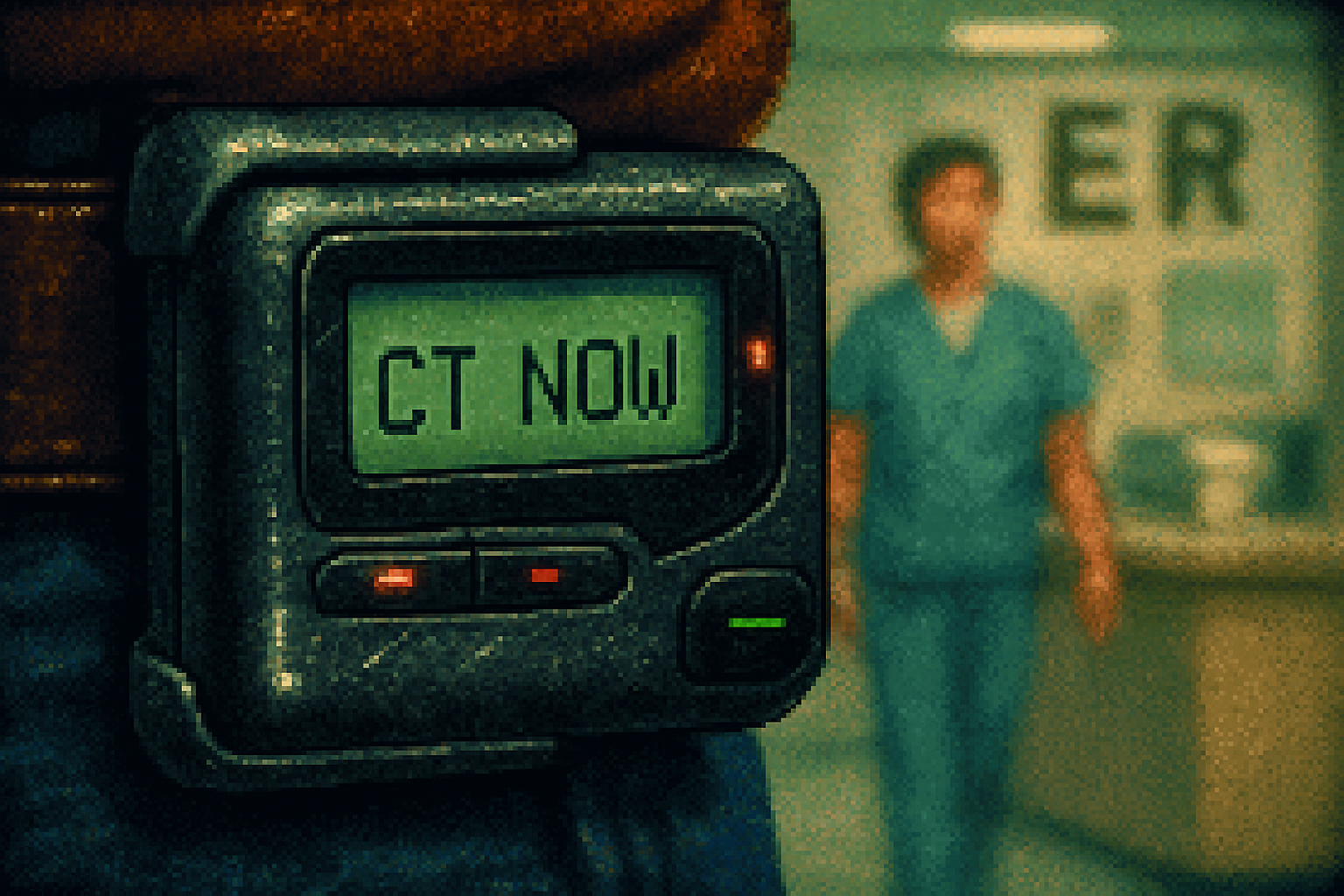· culture · 6 min read
The Beeper Diaries: How a Simple Pager Shaped a Generation's Communication Skills
In the era of beepers and numeric codes, people learned to strip language to its bones. This piece explores how pagers forced brevity and precision, includes first-person recollections, and draws practical lessons for today's overstuffed messaging culture.

It was 2:17 a.m. The emergency department smelled of boiled coffee and disinfectant. Marco - a 26-year-old ER nurse with two years on the job - had his hip hooked to a beeper the size of a matchbox. It chirped: 555-2424. He sighed, decoded the number, and walked out the door with shoes in his hand. No one typed paragraphs. No one called to recite the obvious. You either knew the code, or you took a guess. Either way, action was immediate.
The pager era was not glamorous. It was graceless, clingy, intermittently infuriating, and utterly efficient. It taught an entire generation how to compress thought into action - and how to tolerate ambiguity until the critical bit arrived.
Why a plastic buzz taught us more than a phone ever could
Pagers - or beepers, as we affectionately called them - were the Internet’s blunt predecessor: simple, constrained, and implacably reliable. For most of the 1980s and 1990s, they were the default mobile device for doctors, on-call techs, salespeople, and teenagers. Wikipedia’s pager page gives the technical arc in one place.
Those constraints mattered. Early pagers were numeric-only. Later models accepted short alphanumeric messages, but length was still limited. That scarcity of characters did three things:
- It enforced a hierarchy - what mattered had to be front-loaded.
- It encouraged protocols - pre-arranged codes and templates replaced long explanations.
- It rewarded discipline - you learned to cut the fat.
Think of it this way: a pager is like a surgeon’s scalpel - it imposes focus by removing the room for indulgence.
Voices from the beeper trenches
I interviewed people who actually lived with these devices. Their memories aren’t nostalgia porn; they’re short, sharp notes on the human effects of technological constraint.
Marco - ER nurse (1994–2001) “You learned to be surgical in speech. ‘Adm bed 3, low BP, come now’ - that was a whole conversation. Later on, new nurses would write essays in the text log. We couldn’t be that patient.”
Lena - Advertising account director (1992–2000) “In meetings I’d get a buzz, then a two-line message - ‘Client X needs revision, ASAP.’ That force-fed me the ability to summarize problems for clients in a sentence, not a slide deck. Now meetings are full of people who think verbosity equals competence.”
Dr. Sam - Internal medicine resident (1996–2002) “Pagers created triage-by-text. We learned to parse urgency from format and sender. A numeric-only page? Probably a call-back needed. A short name and ‘ct scan now’ - you dropped everything. It sharpened instincts.”
Alexis - Teen (1995–1999) “We used beepers like social Morse code. 411 meant ‘call me,’ 512 meant ‘I like you.’ It was secret language. It made flirtation concise and dramatic.”
These recollections share a theme: constraint forced intentionality. You didn’t message for fun. You messaged to move something forward.
The mechanics of brevity: what pagers trained us to do
Pagers didn’t teach people to be brusque. They trained them in tradecraft. Here’s what the habit looked like in practice:
- Use a protocol. Numeric codes, templates, or a fixed subject line let the receiver triage instantly.
- Prioritize. Put the action or the ask first. The rest is optional.
- Omit adornment. No preambles. No softeners. The device’s currency was pure function.
Compare two messages about the same issue:
Bad Slack message:
“Hey, when you have a minute could you maybe look over the file I uploaded last night? I know it’s late but I’m not sure about page three - also we might need to change the third paragraph if the client is still on board. Sorry to bother!”
Pager-style message:
“Review doc v3: para 3 needs removal. Reply YES/NO by 10:00.”
The first wastes time and cognitive energy. The second focuses on decision.
Where pager habits survive - and where they died
Some pager-era disciplines are alive today. Doctors still use handoffs and SBAR (Situation-Background-Assessment-Recommendation) formats - descendants of pager protocols. Email subject lines frequently carry the front-loaded action: “Approval Needed: Q3 Budget.” Teams that use structured ticketing systems practice pager-style triage every day.
But many lessons were lost as devices got relentless and conversational. Modern messaging platforms turned every text into a potential thread to chase. Notifications multiplied. The scarcity that once enforced clarity became abundance that fosters verbosity. The result: meetings that could’ve been a single instructive page turn into barking chains of context and excuses.
What product designers and leaders should steal from the pager playbook
If you design communication tools, or simply want fewer wasted minutes in your day, borrow these pagerwise principles:
- Build or enforce character economy - short summaries first, expanded detail optional.
- Make protocols visible - standard prefixes, emoji tags for urgency, or structured forms for routine requests.
- Favor delimited actions - require a clear requested action (Approve / Review / Call) and a deadline.
- Make triage cheap - allow receivers to mark priority with one tap.
- Honor silence - design systems where a short, clear ping gets immediate attention without an expectation of paragraph-length replies.
These are not nostalgia. They’re interface hygiene.
Simple exercises to reclaim brevity (for teams and individuals)
- The 20-word rule - summarize any ask in 20 words or fewer before any elaboration.
- The Pager Protocol - start messages with [ACTION] followed by the ask and a deadline. Example: [ACTION] Send revised deck - 3pm.
- The Two-Line Habit - practice answering only in two lines for one full day. Observe what gets lost - and what doesn’t.
After a week, you’ll notice two things: your inbox gets smaller, and your team makes decisions faster.
A word on empathy - brevity isn’t cold
Cutting words isn’t cruelty. It’s respect for attention. But there’s a balance. Pagers also created friction: ambiguity could cause alarm, and numeric codes exclude outsiders. The goal isn’t to turn every conversation into a command but to reserve compressed language for situations that benefit from it.
Let me be blunt: modern messaging is bloated. It’s a buffet where half the plates are stale. Pagers were the strict parent who made you eat the carrot first. Sometimes we needed that.
Closing: what the beeper era still teaches us
The beeper wasn’t merely an artifact. It was a lesson in constraint, discipline, and the ethics of interruption. It taught people to respect attention and to communicate as if words had a cost - because they did.
If you want clearer teams and faster decisions, you don’t need a plastic box that chirps. You need the habit: compress your ask, nominate the action, give a time, and then - importantly - let silence be an acceptable state.
The beeper diaries are short messages. Let this article be one.
References
- Pager - Wikipedia: https://en.wikipedia.org/wiki/Pager



